Table of Contents
Urban wastewater treatment is the process of removing contaminants such as organic matter, biosolids and harmful chemicals from waste water collected from households, factories and offices.
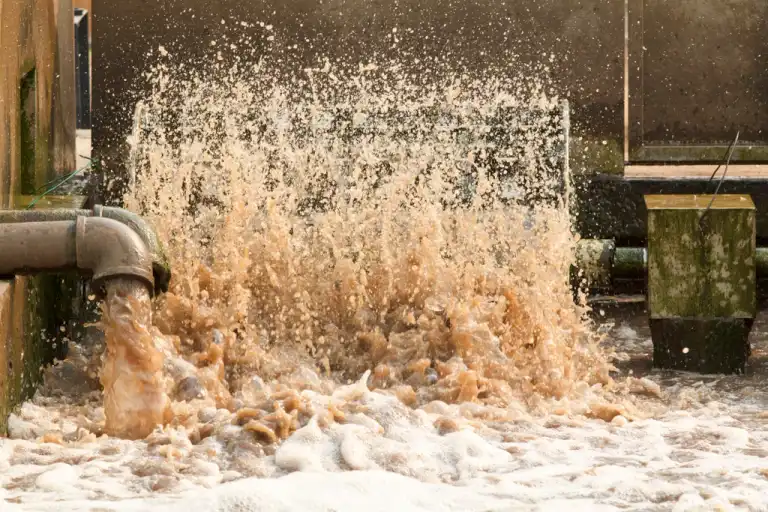
Several countries are introducing stringent regulations through local government led organizations to promote and implement utility plant projects. According to the Global Water and Wastewater Treatment Equipment Market Report an increased population can lead to water scarcity. Exhaustion of fresh water resources can lead to lack of water supply to about 2.2 billion people in the future. Thus, urban sewage management becomes a priority for the future.
What is Wastewater Management?
The process of removing contaminants from wastewater using biological and physicochemical processes is called wastewater treatment. The process of handling the wastewater by treating it before its discharge into the environment is called wastewater management.
Types of Waste Water
In this process the wastewater is divided into three types this includes:
- Stormwater Runoff: Water that flows through streets, or open land after severe rainfall joins the sewer or drains.
- Industrial Wastewater: The liquid waste collected from the industrial units such as factories, chemical discharge after production etc.
- Domestic Wastewater: This is one of the major sources of wastewater also known as municipal wastewater collected from homes, commercial complexes such as hotels, offices, kitchens, laundries. This domestic wastewater is further classified into two types:
- Greywater: Also known as sullage is the liquid wastewater collected from bathroom, laundry and kitchen.
- Blackwater: It is the human organic waste collected from toilets.
Process of Urban Wastewater Management
The wastewater treatment plant process is often divided into physical, biological and chemical processes.The wastewater treatment process typically involves three stages: preliminary treatment, secondary treatment, and tertiary treatment.
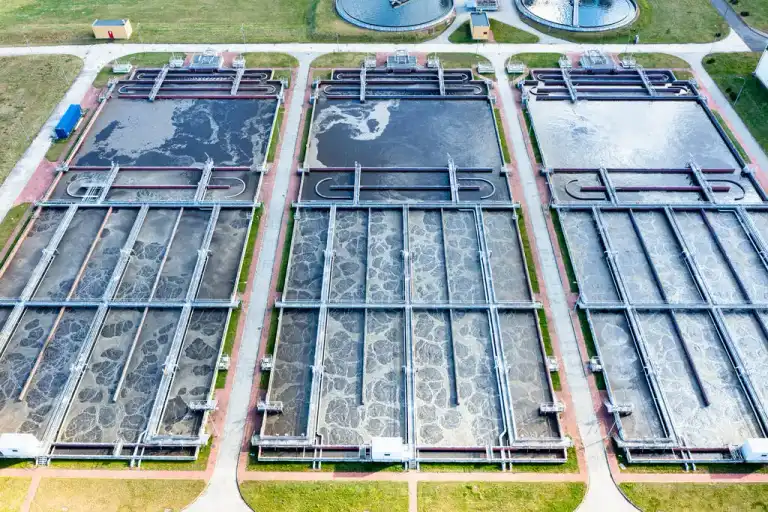
Methods of Urban Wastewater Treatment
The methods of wastewater treatment are often classified into conventional and non-conventional methods. Conventional methods are often automated compared to unconventional methods.
Conventional Methods: This includes activated sludge method, trickling filters and rotating biological contactors.
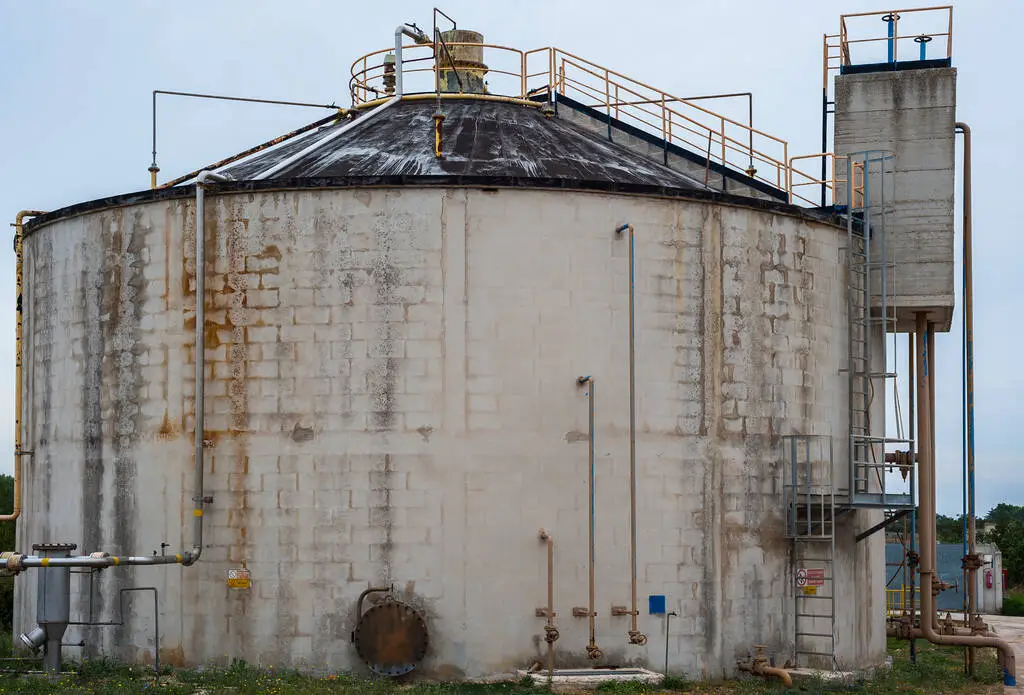
- Activated Sludge: Microorganisms feed onto the organic matter in the urban wastewater producing purified effluent. These microorganisms are supported with additional oxygen supply injected into the sewage.
- Trickling Filter: In this method, microorganisms are attached in an inert packing material. This filter when passed through the sewage water absorbs the organic matter from the wastewater. These filters are often considered more efficient in terms of BOD (Biochemical Oxygen Demand).
- Rotating Biological Contactors: The rotating biological contactors (RBC) is a large disc that rotates the sewage water. This causes more oxygen supply for the existing microorganisms (bacteria, fungi, aerobic and anaerobic bacteria, algae) to multiply and form a layer of biomass. RBC is highly used to treat domestic blackwater and greywater.
Non-conventional Methods: These methods are often low-cost and are convenient for operation and maintenance. They are considered more effective in removing pathogens and providing quality treated urban wastewater.
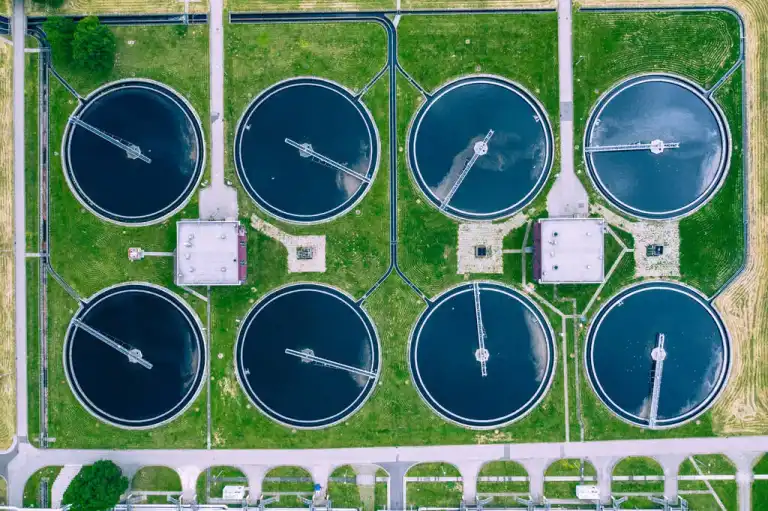
- Waste Stabilization Ponds: Large sized man-made ponds in which blackwater, greywater or fecal sludge that are exposed to natural processes such as sunlight, wind and microorganisms for treatment of wastewater. This treated water can be used for agriculture, and industrial purposes.
- Constructed Wetlands: This method is used for stormwater that might contain vegetation that helps microorganisms breakdown organic materials.
Find Wastewater Projects and Tenders around the WorldClaim your FREE leads!
Importance of Urban Wastewater Treatment Plants
Urban wastewater treatment process is essential to safeguard human health and protect the environment. Urban waste water collected from households, industries and daily activities like sinks, washrooms and washing appliances contain high organic matter, nutrients, pollutants and chemicals that can harm water bodies disrupting aquatic life.
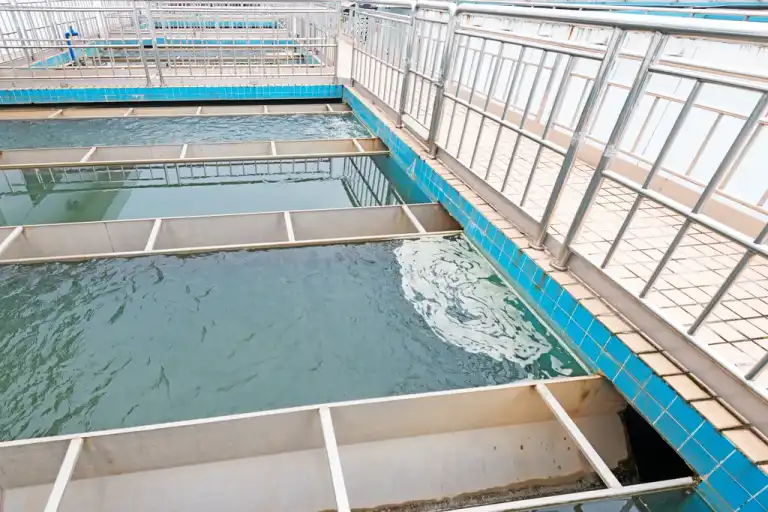
Raw sewage if released into water bodies causes the organic matter to break down using large amounts of dissolved oxygen from water making it inhabitable for aquatic life. Similarly, urban waste water consists of excess minerals and nutrients like phosphorus, nitrogen, and other minerals leading to extensive growth of algae and fungi causing reduced sunlight and oxygen supply to aqualife under the sea level and increased risk of water-borne diseases. Thus, municipal wastewater treatment plants- recycled water becomes a source of precaution to avoid water-borne diseases and protect the environment too.
Driving Forces Behind Urban Wastewater Treatment
There are several driving forces that increased the usage of urban wastewater treatment facilities worldwide. Few of the prominent driving forces are listed below:
Urbanization and Population Growth: Increased population and industrial revolution led to an increased production of wastewater.
Water Scarcity: Extensive use of natural resources can lead to exhaustion and contamination, thus making wastewater treatment an alternative water resource.
Environmental Laws: Government organizations enforced compliance for the safety of the environment led to the shift toward wastewater systems.
Public Health Benefits: Increased urban waste water led to water-borne diseases such as increased cases of typhoid, and cholera.
Growth of Urban Wastewater Treatment Market
Increased awareness of human health and environmental protection has led to the implementation of urban wastewater treatment directive in countries like Singapore, UK and India.
The European Union (EU) established an environmental agency called the European Environment Agency (EEA) in 1990. This agency aims to support sustainable development by collecting data about water resources, air quality and climate change. The EU through the EEA introduced the Urban Waste Water Treatment Directive (UWWTD).
The UWWTD directive sets the standards for wastewater collection, treatment, and discharge of urban wastewater. The major directives under the UWWTD are:
- Water Framework Directive: In this directive the water management includes water standards in line with the ecological and chemical status of the water bodies and environment.
- Marine Strategy Framework Directive: In this directive, marine life is protected from non-treated urban wastewater discharge.
- Nitrates Directive: The Nitrates Directive focuses on protecting agricultural resources from nutrient-rich urban wastewater, recovering excess nutrients like nitrates and phosphorus for fertilizer use.
These directives have driven market growth by stimulating demand for advanced treatment technologies and imposing stricter regulations on wastewater discharge.
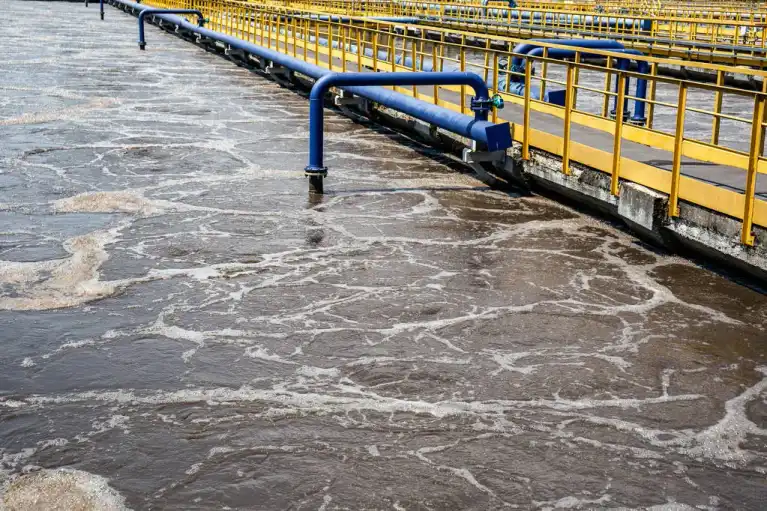
The U.S. Environmental Protection Agency (EPA) was established in 1970 to protect human health and the environment. It is responsible for enforcing standards for air and water quality, waste management and fertilizer use. There are about 16,000 publicly owned wastewater treatment plants monitored under the EPA regulations. These plants treat about 75% of US sanitary sewerage. The EPA regulates a framework for urban wastewater management as follows:
- Clean Water Act (CWA): It is a primary federal statute regulating the nation’s water. This act includes - preventing water pollution, ensuring water quality standards, requiring discharge permits and maintaining the relevant records.
The Clean Water Act, under the Federal Water Pollution Control Act of 1948, addresses the contamination of groundwater due to non-treated urban wastewater
In India, Central Pollution Control Board (CPCB) is a statutory body under the Water Prevention and Control of Pollution Act established in 1974. It is responsible for setting water quality standards, monitoring and promoting innovative solutions for urban wastewater management in India.
From its time of establishment, CPCB introduced several laws as follows:
- Water Prevention and Control of Pollution Cess Act, 1977: This act, which came into force in 1992, monetizes wastewater treatment by providing a 25% rebate on the payable cess.
- National Urban Sanitation Policy, 2008: It focuses on recycling, reuse and safe discharge of human waste. This policy aligns with India's National Water Policy, 2012, which incentivizes or subsidizes decentralized sewage treatment plants, recycling, and reuse of treated urban wastewater.
- The National Water Mission: This mission promotes recycling wastewater for meeting urban water needs. Under this mission, the Tariff Policy, 2016 by the Ministry of Power - it is mandatory for all thermal plants at a radius of 50km from sewage treatment plants to use treated urban waste.
- National Fecal Sludge and Septage Management Policy, 2017: It aims to achieve 100% safe sanitation through integrated urban sanitation, safe disposal of fecal sludge and use of advanced technologies to achieve water quality standards.
According to Blackridge’s Global Water and Wastewater Treatment Market Report, the market size in 2021 was valued at USD 60.2 Billion which is projected to be valued at USD 85.68 Billion by 2030.
The report further states that Asia-Pacific dominates the global wastewater treatment market with a growth CAGR of 5.2%, with India as the second-largest user of wastewater treatment facilities. Europe is expected to grow at a CAGR of 3.1% through its Urban Wastewater Treatment Directive (UWWTD). As a part of which, in Western-Central Europe a major proportion of households collected wastewater is transported to wastewater treatment plants.
Benefits of Urban Wastewater Treatment
There are several benefits of of urban waste water treatment plants a stated below:
- Reduced Climate Change: Treating urban wastewater will help in producing biogas that can be used as a source of renewable energy. Thus reducing greenhouse gas emissions.
- Water Reuse: Treated wastewater on further filtration can be repurposed for irrigation, and industrial purposes. This water meeting the water quality standards is safe for drinking too.
- Repurpose of Nutrients & Minerals: During the process of treating urban wastewater the excess nutrients and minerals such as nitrogen and phosphorus removal from the organic matter (human waste) collected can be reused as fertilizers in farming practices.
- Protecting Groundwater: Often untreated wastewater discharge into the environment increases the risk of contaminating fresh groundwater, which is one of the major sources of drinking water. Treating urban wastewater helps reduce the risk, thus protecting groundwater too.
Find Wastewater Projects and Tenders around the WorldClaim your FREE leads!
List of Largest Wastewater Treatment Plant Projects (based on capacity)
| Project | Capacity (m3/day) | Location |
| Bahr El-Baqar WWTP | 5,600,000 | Al Tafreah, Egypt |
| Stickney Water Reclamation Plant | 5,450,994 | California, USA |
| Beckton STP | 700,000 (estimated) | London, UK |
| Okhla STP | 530,000 | Delhi, India |
| Jebel Ali Sewage Treatment Plant | 375,000 | Dubai, UAE |
| Shafdan | 370,000 | Tel Aviv, Israel |
| Rithala | 302,833 | Delhi, India |
| Keshopur | 272,550 | Delhi, India |
| Kondli | 264,979 | Delhi, India |
| Nilothi | 227,125 | Delhi, India |
For more such latest utility plant projects list you may subscribe to Blackridge’s Global Utility Projects Database.
Top Wastewater Treatment Companies Worldwide
Some of the key players in the urban wastewater treatment industry are Veolia Environnement SA, Delhi Jal Board, and Thames Water Utilities. These large-scale wastewater management companies are providing advanced sewage treatment technologies to safeguard human health and environment. It includes the use of advanced filtration systems, membrane-based processes, water reuse and recycling solutions for domestic, industrial and commercial purposes.
You can read about the top sewage treatment plant companies that are leading the wastewater treatment industry.
Conclusion
A urban wastewater treatment plant receives a mixture of domestic wastewater, industrial wastewater, combined sewer that results in high organic matter called biosolids which are treated efficiently, thus maintaining water quality before discharging into the environment. Several initiatives are made by governments worldwide to avoid the water scarcity predicted for the future.
Through pre-established urban waste water directive industrial waste water and other receiving waters are treated for excess nutrient removal and are released into coastal water or surface water after meeting the water quality standards under the water framework directive.
FAQ’s
How is urban wastewater treated?
Urban waste water is treated using several biological and physicochemical processes such as sedimentation, coagulation, filtration, and reverse osmosis.
What are the urban water treatment steps?
Coagulation, Flocculation, Sedimentation, Filtration, and disinfection are the five steps in the urban water treatment plant.
What is the Urban Waste Water Treatment Directive?
Urban Waste Water Treatment Directive is a European Union Directive that manages urban wastewater collection, treatment and discharge.
What is the source of urban wastewater?
Domestic activities, industrial activities and heavy rainfall are major sources of urban wastewater. This untreated sewage is considered contaminated due its high levels of biosolids that can be harmful for public health if discharged untreated.
What is urban water disposal?
Urban water disposal is the urban wastewater disposed into water bodies and the environment after treating it to meet the required water quality standards.
Connect with decision-makers of Wastewater plant projects across Globe for business opportunities.
Subscribe to our upcoming and ongoing wastewater plant projects and tenders database and receive exclusive benefits like:
- Regular updates on Wastewater projects and tenders
- In-progress and Completed Wastewater projects
- Essential details, Timely Updates, Key Stakeholder Contact Information
- Industry Trends and insights by experts
Take your business to the next level with our Global Wastewater projects database!




Leave a Comment
We love hearing from our readers and value your feedback. If you have any questions or comments about our content, feel free to leave a comment below.
We read every comment and do our best to respond to them all.